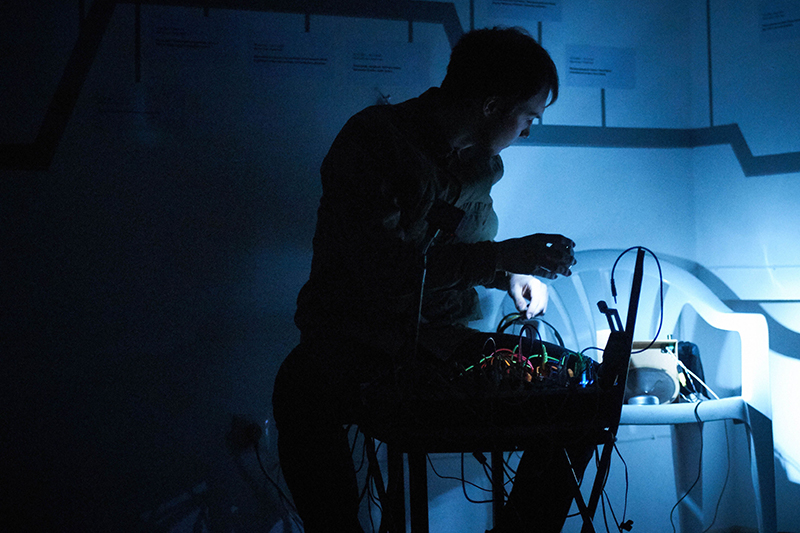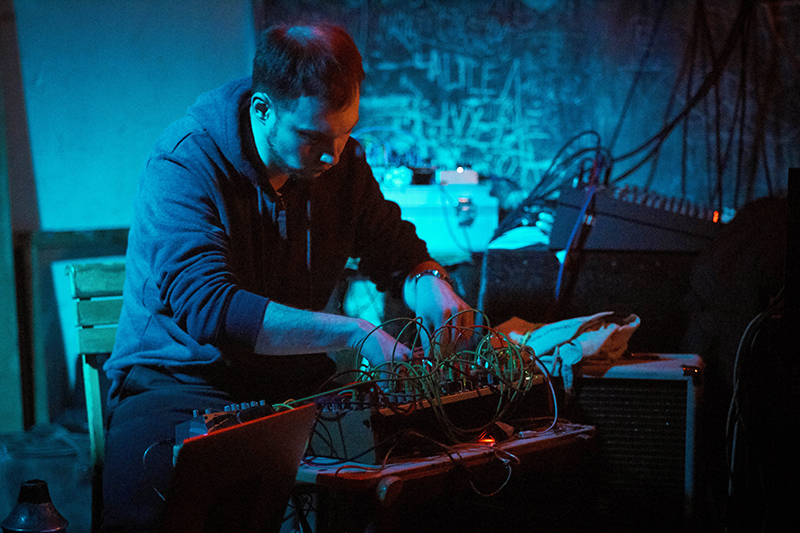
Ilia Belorukov is a musician from Saint Petersburg, who moved to Novi Sad, Serbia in 2022.
He works in the directions of improvised, noise and electroacoustic music. He’s widely collaborating with local and foreign musicians and performers.
Ilia practices an experimental approach of sound extraction on alto saxophone, using modular synthesizer and other instruments.
His works were released on labels such as Clean Feed, SOFA, Moving Furniture, Astral Spirits, Notice Recordings, Raw Tonk, Mikroton and many others. He is one of the founder of the label Intonema and was one of curators of the label Spina!Rec.
He is organizer of events in Saint Petersburg and Russia and was co-organizer of the Teni Zvuka and Spina!Fest festivals.
He writes reviews for Jazzist and notes about music as musicworm in Telegram channel.
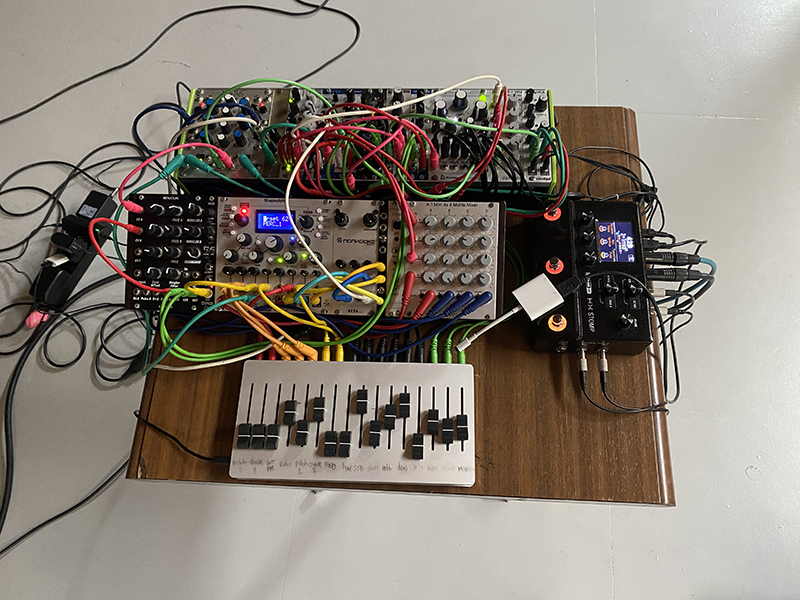
What have you been working on lately, and do you have any upcoming releases or performances?
I have on-going collaborations with different musicians, which means rehearsing, recording, discussing, selecting, mixing, mastering.
Some projects are close to being finished, some are in the very beginning.
There’s also the never-ending solo work in the direction of multilayered compositions and of course I’m not mentioning practicing and recording instruments, sound engineering, writing reviews and articles for my Telegram channel and Jazzist website.
You grew up in St Petersburg and moved to Serbia, how active is the musical scene there? Why did you chose Novi Sad?
The first time I visited Serbia was 2011 and played in Novi Sad and Subotica, and had enjoyed it very much.
When I came in 2022 I didn’t have so many connections around here, but all of the people I knew helped and still help a lot in adapting to local life. I did not have much time to think in September 2022. I was in Oslo with a visa that expired in two days, and first I went to Montenegro for one month to stay at my good friend’s place and just relax and think about what to do. After that I came to Novi Sad, it was in late October 2022.
Serbia is super friendly! It helped me and my family to make moving as smooth as possible in those circumstances.
Scene is not so huge here, but I found interesting musicians and some organizers who are involved in improvised and electroacoustic music. I’m playing and recording with a few of them. Also I have to mention that the scene around relocated Russians is bigger and bigger, but mostly in Belgrade.
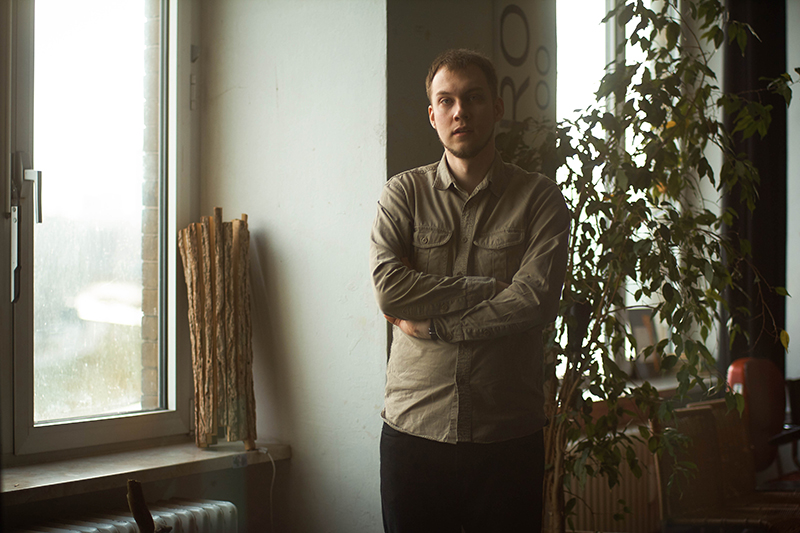
You initiated the label Intonema and were one of curators of the label Spina!Rec. Are you still active in these fields? Any new release, can you please develop how work the labels, what was your philosophy behind it?
Intonema’s activity as a label is on pause since 2022, but in February 2024 I decided to use our online resources to organize concerts in Serbia. Me and my colleagues from Petersburg were involved in the organization of gigs since 2008, long before Intonema started as a label, and now it seems logical to continue to do it and use our background.
Also from time to time I’m uploading videos from my activities on Intonema’s YouTube channel. At the same time I’m constantly thinking about how to release music nowadays and make it visible to some audience at least. But right now I’m not ready to continue releasing through the label.
For Intonema we had several tasks. We started the label in 2011 with Mikhail Ershov, bass player from Wozzeck band, because we wanted to release our own music and control all the steps from the recording to printing the package and sending to reviewers. In this direction we did several releases from the beginning to the end, and I’m proud of it. Second (and third) idea was to promote local musicians abroad, and to promote music from abroad to audiences in Petersburg and Russia. This task wasn’t very successful in my opinion, but actually it’s important that we made some connections between musicians from both sides.
Spina!Rec was a smaller label with main focus on tapes and local scene, but at some point we started to use both labels’ audiences to organize concerts for locals and international musicians and release the recordings.
Are you still playing in groups, improvising? How do you approach live these days? Do you still need an interaction with an audience or are you happy with studio work?
I’m considering myself as an improviser in the first place.
So, yes, playing with other musicians is still the main part of my activity. Luckily I found several ones in Novi Sad to play with, and I’m keeping and gaining international contacts and projects as much as possible. Going on tours and playing with new people are important things for me as an improviser.
I think I need to travel and meet people to keep up my own skills in improvisation, develop something new and surprise myself.
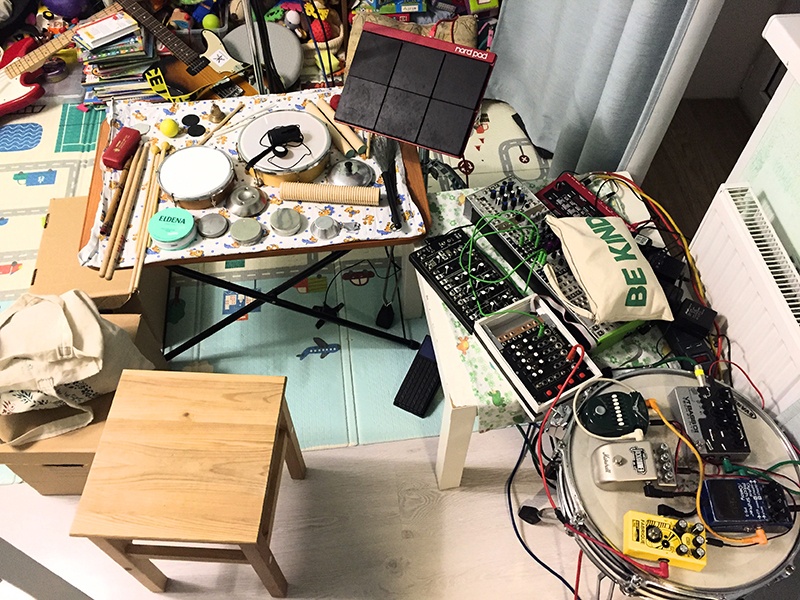
Do you find that you record straight with no overdubbing, or do you end up multi-tracking and editing tracks in post-production?
I like both ways, but basically it’s depending on the music I’m working on and the context I’m in. I have a series of drone/electroacoustic/field recordings albums that are not possible to play live. These pieces are created from different sources of sounds that I had recorded with musical instruments or environmental sounds, and – after that – processed all these sources.
Another thing is a work-in-progress series of mainly live recordings called ‘Selected Works’. They are self-released compilations. For me it’s a possibility to mark some points in my development as a musician. I have to say I hardly ever re-listen to what was released, but when I’m preparing I listen and think about what I played.
For compilations with a modular synthesizer I also wrote liner notes about places where I played, because I’m interested in acoustics of the spaces and how differently I’m reacting to each space. In a way I’m not playing solo, but I’m playing with a room.
You play Saxophone so obviously you are interested in gesture, physical move to create the music, right? What is your favorite way to achieve such expression?
I’m trying to play alto saxophone as if it were an electronic instrument and I try to use modular synth as an acoustic instrument. Both ideas have blended together more and more with time, and some people have commented that I play sax as it is synthesizer’s feedback. Interesting remark for me, and I think it’s not a bad explanation of some of the approaches that I use.
My instrumental background also leads me to use the modular synth as an instrument to react quickly to what happens around, this is another idea that keeps me curious. One of the things is that basically I’m using quite a lot of internal feedback patches, and I’m already in the situation of playing with some processes in the synthesizer, besides musicians I’m playing with. It needs concentration and knowledge of what happens. The first thing is still listening to the environment and trying to find my way and my sounds in it.

Your compositional process is also based upon the use of acoustic instruments that you process or combine with Electronic. How do you work to marry that Electronic with your acoustic matiere?
I have been interested in electronics since my teenage years, when I messed around with computer and music software. At some point I started to play on alto and baritone saxophones (I studied saxophone in music school) with looper, delay, pitch shifter and reverberation effects pedals. Later on, switching to laptop and software, especially AudioMulch, was an important step. After that I started to use ppooll, and I still use it from time to time. After years of combining them I decided to split saxophone and electronics, because I had no chance to concentrate enough on both. Lately I started to use some small electronics with the saxophone again, but it’s a rather simple setup than something that I can’t control.
At the same time I like to process the acoustic sound of instruments on the computer, it is fun at least. For example, for the first part of this Session I recorded acoustic percussion and modified almost all of it in (sometimes) unpredictable ways. I did the same for electronic sources. After that I used all of the material, both acoustic and processed, to compose/construct the pieces. For the second part I used a good old M sequencer (by Joel Chadabe) to play the Nord Drum 2, then also processed some parts heavily and used all the results I got to construct the 2nd part of the album.
How were you first acquainted to Modular Synthesis? When did that happen and what did you think of it at the time?
As I mentioned above, I used AudioMulch and ppooll software, and both you can call modular systems. At some point I also borrowed Nord Modular G2 and used it for six months or so. I really love this piece of gear. I tried many virtual modulars, but only with Nord Modular I felt I could create music without too much thinking about what I have to do and how to patch. Very intuitive and simple interface. I think mostly I was and still curious how to deal with the time in music aside grids of sequencers and DAW’s. Modular systems give me exactly this opportunity.
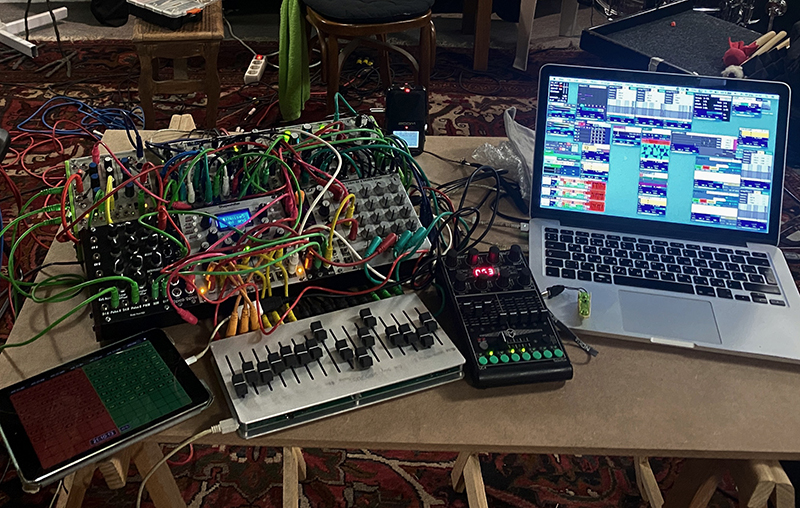
When did you buy your first system? What was your first module or system?
Early in 2017, I bought the 0-Coast from Make Noise. I still like it very much for its sound, size and flexibility.
The first module I bought at the end of that year, and it was a used Doepfer matrix mixer. It was even before I had any Eurorack case for modules! The price was very good, and I knew I would need it in the future, because I already had a passive matrix mixer for effects pedals.
After a while a friend of mine gave me an 84hp case with one or two modules and I started to collect more from the secondhand market. Till now I use this case, and it’s my main one.
How long did it take for you to become accustomed to patching your own synthesizer together out of its component parts?
I think I was well-prepared for this, because in the past I had the effects pedals and the process is quite similar actually. I used a matrix mixer to produce pedal feedback and I had a period of heavily prepared alto saxophone with different objects, which is in a way also kind of like patching.
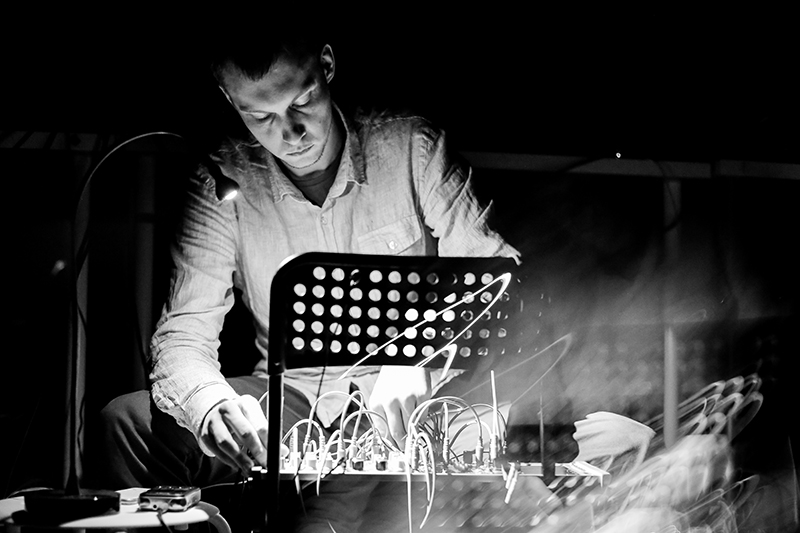
What was the effect of that discovery on your compositional process? On your existence?
Effect pedals or no-input mixer didn’t give me flexibility with the sound, quite often I was thinking that I needed something else: more controllable and more chaotic at the same time. I was thinking of buying a small semi-modular synthesizer, but before the 0-coast appeared, I wasn’t sure what I really needed to have.
Quite often modularists are in need for more, their hunger for new modules is never satisfied? You owning an impressive amount of gear, how do you explain that?
Now I have an 84 hp case with some utility modules on the sides (so, in total it’s packed with a 93 hp). Another one I bought recently is an 84 hp and I’ll add 4-8 hp on the sides. This system is big enough for me to get what I need and still be able to control it in real time and remember what happens.
Also I keep this size of setup because I can’t travel with more gear, it will be much more complicated because sometimes I need saxophone on tour as well. Besides that I have one more 80 hp case with some modules, but it’s kind of a warehouse. Of course, I have some other equipment that I use from time to time like pedals, small acoustic instruments and percussion.
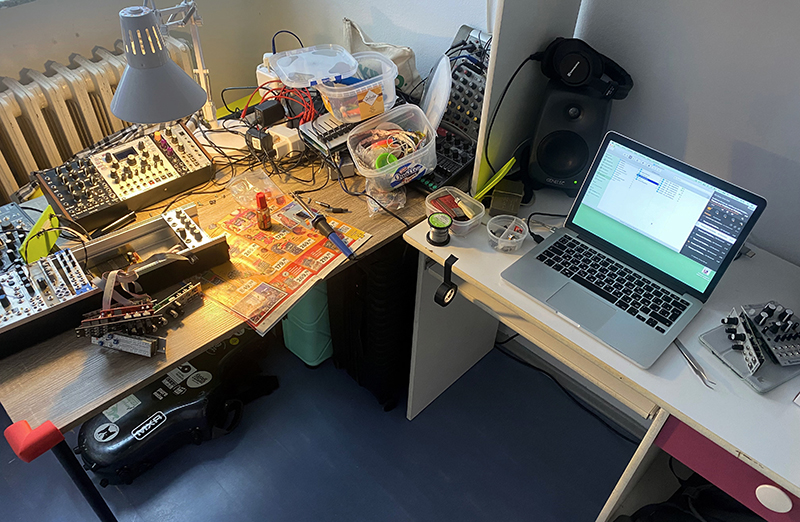
How has your system-instrumentarium been evolving?
It was quite a slow process of adding new modules to the system.
From one side it was because I had no possibility to afford everything at once. On the other hand I always have the idea of exploring the module properly and understanding what I can do with it. I more or less started with analog only modules, but now I have complex digital ones as well, which, after all, doesn’t really matter. I just try to sound the way I like.
Would you say that their choice of an instrument can be an integral part of your compositional process?
I wouldn’t say it’s about the compositional process, because I’m mostly working as an improviser, which means my daily practicing involves working on patching and sounds, not preparing something particular and composing with it. But the choice of modules affected the sound material itself, that’s for sure. Also it means material I’m recording to use for compositional duties changing every time I have something new. It includes not only new modules, it includes different patching.
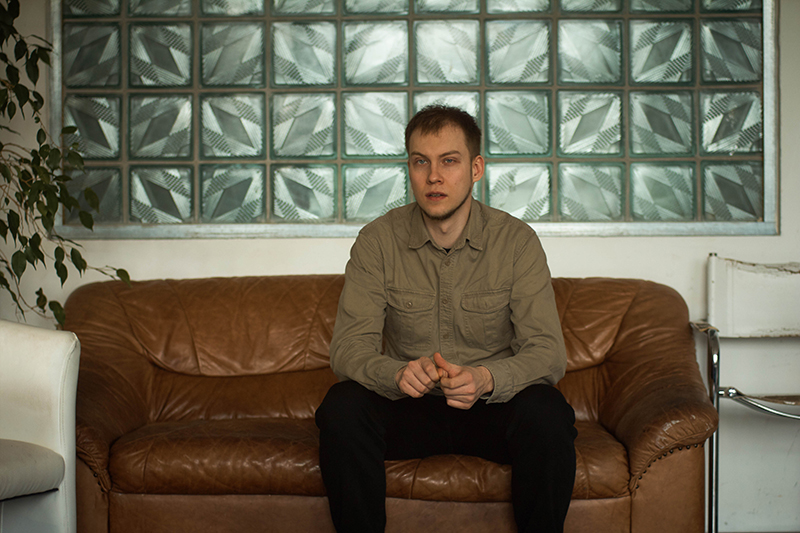
Would you please describe the system you used to create the music for us?
This was firstly an idea to record some acoustic percussion, small things like tamborim and some junk metal stuff and zither. During the same time period I recorded some synthesizer’s parts and electronic drums. It was all improvised, without any real idea what it would be and how I’ll use it later. The idea of a detailed synth/drums album arose much later, when I started to work with recorded material and processing it. I found some similarities in the sounds and started to combine all of them. Also recorded more synthesizer tracks at some point and finished the 1st part of the album.
The 2nd part was recorded much faster, I already knew what I wanted to get and what to do. Only difference was in how I recorded the drum parts. I had no acoustic percussion and decided to work with digital drum synthesis on the Nord Drum 2. It was based on an M sequencer which gives the possibility to get rid of patterns and grids, or maybe better to say it gives the possibility of variations of many parameters in the pattern.
Do you pre-patch your system when playing live, or do you tend to improvise on the spot?
I have some patches prepared at home and at the venue I choose what I’ll use for a particular case.
At the concert I barely have enough attention and time to rebuild it. I can change some cables/routings, but that’s it. I tend to consider each modular synth patch as a musical instrument that I need to learn and understand how to work with. It’s my instrumental background that says to me: explore what you have and shape your art.
What would be the system you are dreaming of?
Seems like the most simple answer is Nord Modular G2, I would still be happy to work with this piece of gear and make hybrid digital-analog system. In a broader sense I’d like to try really big systems with multichannel setup to create the sound in the room and discover how it spreads around.
Also I’m curious about systems from only one Eurorack brand, to check how one builder can think in terms of synthesis.
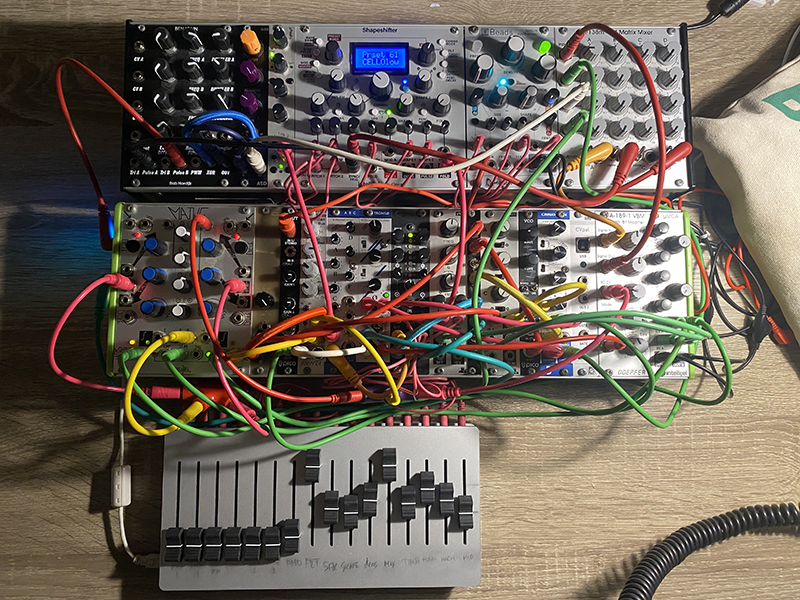
Are you feeling close to some other contemporary Modularists? Which ones?
Mostly I’m interested in those who are playing in the context of improvised music: Jason Kahn, Eric Bauer, Thomas Lehn, Richard Scott, Egil Kalman, Ben Vida to name a few.
Gaudenz Badrutt, Sam Pluta, Hunter Brown, Wade Matthews, Marcus Schmickler from those who use computers (but not only), but in a modular way and giving priority to reactive playing.
Which pioneers in Modularism influenced you and why?
Electronic music composers from the 60s and 70s are still curious for me. Sometimes I discover someone’s music or re-discover it and it sounds very fresh even nowadays.
Any advice you could share for those willing to start or develop their “Modulisme” ?
Be patient to explore each module and understand what you can get from it. Even simple modules can sound complex in combination with other simple ones.
https://www.cronicaelectronica.org/ilia-belorukov/
